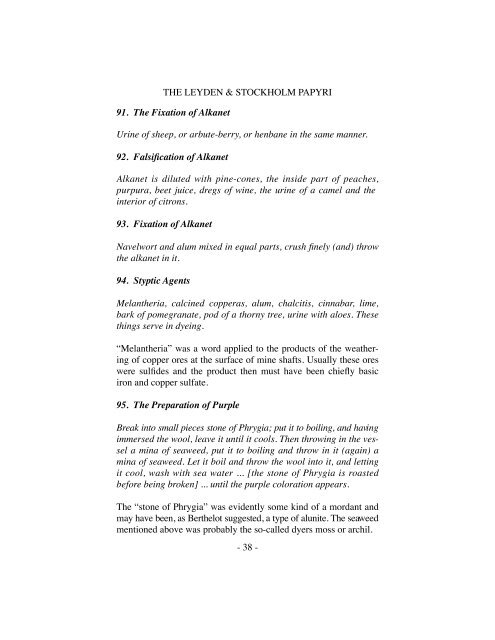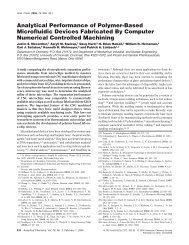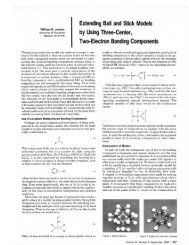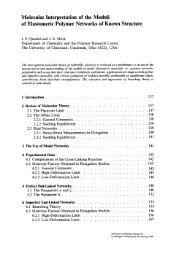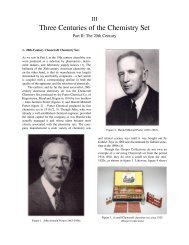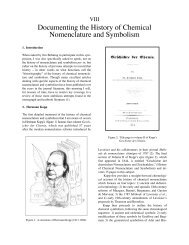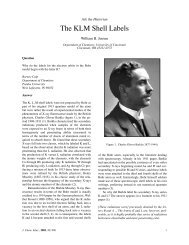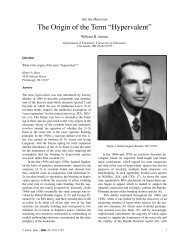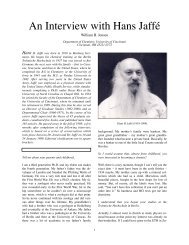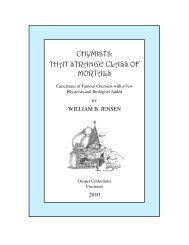The Leyden and Stockholm Papyri - University of Cincinnati
The Leyden and Stockholm Papyri - University of Cincinnati
The Leyden and Stockholm Papyri - University of Cincinnati
Create successful ePaper yourself
Turn your PDF publications into a flip-book with our unique Google optimized e-Paper software.
91. <strong>The</strong> Fixation <strong>of</strong> Alkanet<br />
Urine <strong>of</strong> sheep, or arbute-berry, or henbane in the same manner.<br />
92. Falsification <strong>of</strong> Alkanet<br />
Alkanet is diluted with pine-cones, the inside part <strong>of</strong> peaches,<br />
purpura, beet juice, dregs <strong>of</strong> wine, the urine <strong>of</strong> a camel <strong>and</strong> the<br />
interior <strong>of</strong> citrons.<br />
93. Fixation <strong>of</strong> Alkanet<br />
Navelwort <strong>and</strong> alum mixed in equal parts, crush finely (<strong>and</strong>) throw<br />
the alkanet in it.<br />
94. Styptic Agents<br />
THE LEYDEN & STOCKHOLM PAPYRI<br />
Melantheria, calcined copperas, alum, chalcitis, cinnabar, lime,<br />
bark <strong>of</strong> pomegranate, pod <strong>of</strong> a thorny tree, urine with aloes. <strong>The</strong>se<br />
things serve in dyeing.<br />
“Melantheria” was a word applied to the products <strong>of</strong> the weathering<br />
<strong>of</strong> copper ores at the surface <strong>of</strong> mine shafts. Usually these ores<br />
were sulfides <strong>and</strong> the product then must have been chiefly basic<br />
iron <strong>and</strong> copper sulfate.<br />
95. <strong>The</strong> Preparation <strong>of</strong> Purple<br />
Break into small pieces stone <strong>of</strong> Phrygia; put it to boiling, <strong>and</strong> having<br />
immersed the wool, leave it until it cools. <strong>The</strong>n throwing in the vessel<br />
a mina <strong>of</strong> seaweed, put it to boiling <strong>and</strong> throw in it (again) a<br />
mina <strong>of</strong> seaweed. Let it boil <strong>and</strong> throw the wool into it, <strong>and</strong> letting<br />
it cool, wash with sea water ... [the stone <strong>of</strong> Phrygia is roasted<br />
before being broken] ... until the purple coloration appears.<br />
<strong>The</strong> “stone <strong>of</strong> Phrygia” was evidently some kind <strong>of</strong> a mordant <strong>and</strong><br />
may have been, as Berthelot suggested, a type <strong>of</strong> alunite. <strong>The</strong> seaweed<br />
mentioned above was probably the so-called dyers moss or archil.<br />
- 38 -


